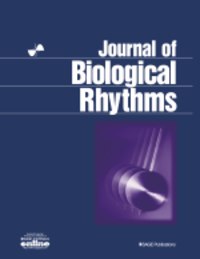 | |
| Discipline | Life Sciences |
|---|---|
| Language | English |
| Edited by | Mary E. Harrington |
| Publication details | |
| History | 1986-present |
| Publisher | |
| Frequency | Bimonthly |
| 3.649 (2021) | |
| Standard abbreviations | |
| ISO 4 | J. Biol. Rhythms |
| Indexing | |
| CODEN | JBRHEE |
| ISSN | 0748-7304 (print) 1552-4531 (web) |
| LCCN | 86655794 |
| OCLC no. | 11000168 |
| Links | |
The Journal of Biological Rhythms is a bimonthly peer-reviewed scientific journal that covers chronobiology or any rhythms, especially biological rhythms with a special emphasis on seasonal and circadian rhythms. The journal publishes primary reports, reviews, commentaries, or letters. The Journal of Biological Rhythms has been in publication since 1986 and is currently published by SAGE Publications. The journal is the official publication of the Society for Research on Biological Rhythms. The editor-in-chief is Mary E. Harrington.